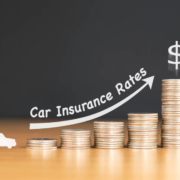Three Statistical Factors that Affect Your Car Insurance Rates
Insurance companies use many factors to determine the premium rate specific to each client. Persons with expensive possessions, cars, or businesses may be charged higher than others. Insurance providers also consider statistics to set prices; that is, they study facts and figures and use them to determine their rates.
Here are some of the car insurance industry statistics that are likely to affect your rate.
1. Credit Score
Although it may seem unfair that persons with a low credit score are charged higher coverage rates than others, statistics have shown that this group of people are more likely to file claims than those with good credit. People with high credit scores may choose to pay for easy repairs or minor damages, while the low credit group is unlikely to have extra income for such. The provider considers the pros and cons for both groups of people to make correct predictions and estimations.
2. Age
The insurer will consider the age of the person before deciding on the rate for the automobile. Reports have shown that teenagers are at a significantly higher risk of getting involved in car accidents compared to adults; hence, your provider may consider if you have teenage drivers at home. Intoxication, texting and driving, speeding, and tailgating are some of the dangerous behaviors that are common among teenagers, increasing the likelihood of car crashes.
Let’s take a look at the statistics on teenage drivers:
Per mileage, persons aged 16 to 19 are three times more likely than those aged 20 and above to have fatal car accidents.
The percentage of male teenagers involved in auto accidents is significantly higher than females.
Also, because there is no driving history to consider when starting an auto coverage plan for a teenager, the provider makes estimations based on statistical data.
For elderly drivers, age is not the direct cause for an increase in risk but age-related health conditions such as stiff joints and vision problems are red flags for insurance companies. Generally, it is advisable to stop driving at age 80 because there is a likelihood of sudden loss of motor skills.
3. Location
Some states or cities are safer to drive in than others. Insurance companies also consider geographical locations when deciding on rates. Accidents are higher in cities or urban areas than in rural areas due to the number of drivers and the commotion caused by heavy traffic. Congestion is one of the leading causes of car crashes, and small towners do not suffer regular traffic patterns compared to city people. The traffic fatality rate in America is 12.4 deaths per 100,000 inhabitants. Deducing from the statistical reports, persons living in the populous zones will tend to pay more in insurance than those living in lesser populated areas.
Note that your provider relies on the general statistics regarding your age, sex, credit score, driving frequency, and geographical location before setting the cost of auto insurance. However, you can make use of the available discounts for good driving behavior to keep your premium low.
Willing to learn more? Contact our car insurance experts at James Page Insurance today! We will be happy to assist you.




